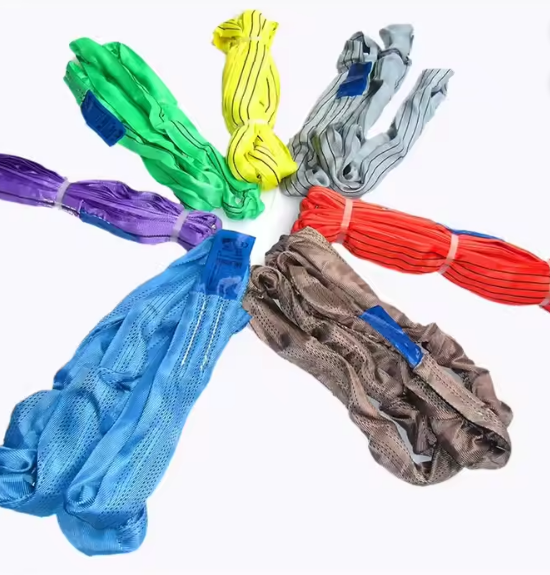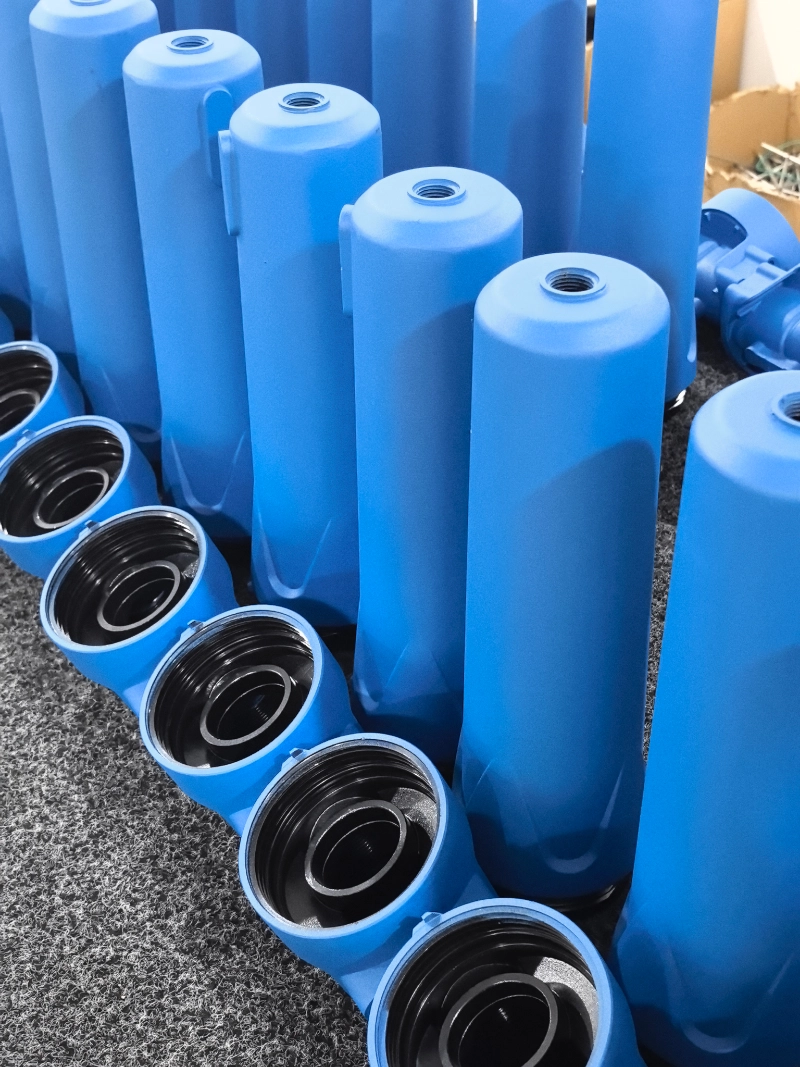Polyester slings, a common type of flexible lifting sling used in modern lifting operations, are widely used in industries such as machinery manufacturing, logistics handling, shipbuilding, power generation, and construction. They are highly favored by users for their light weight, surface resistance, high strength, and ease of use. However, in actual use, polyester sling breakage is not uncommon, and in severe cases, can even result in casualties and property damage.
So, why do polyester slings break? This article systematically analyzes the common causes of polyester sling breakage from multiple perspectives, helping users implement protective measures in daily operations to improve operational safety and the lifespan of the slings.
1. Overloading is the main cause
1.1 Lifting weights exceeding the rated load
Polyester slings have clearly defined rated load capacities, typically identified by labels or color codes. If, during actual lifting, the weight of the object exceeds the sling's rated load capacity, the sling material is pushed to its limits, damaging its internal fiber structure or even causing sudden breakage. This type of "overloading" is one of the most common and dangerous operational errors. 1.2 Excessive Dynamic Impact Load
During certain lifting operations, improper operation, such as sudden lifting or lowering of a crane, can easily generate strong dynamic impact forces, momentarily subjecting the sling to a tensile force far exceeding the static load. This short, intense impact can cause breakage before the sling shows any noticeable wear, especially at corners or joints.
2. Ignoring Wear and Aging of Slings
2.1 Failure to Replace Regularly
Over extended use, especially when in contact with rough or sharp objects, polyester slings can experience wear on the outer fibers, loss of strands, and thinning. These seemingly minor damages, if not addressed promptly, can easily lead to breakage at critical moments. This is especially true at the contact points between the sling and the hook, as well as at sharp corners, where stress concentration is most severe.
2.2 Material Aging Due to Ultraviolet Radiation
Prolonged exposure to sunlight can cause UV rays to break the polyester molecular chain structure, leading to embrittlement and a decrease in tensile strength. This aging damage may not be noticeable on the surface, but it can actually significantly impact the load-bearing capacity. 2.3 Structural Damage Caused by Chemical Corrosion
Although polyester is somewhat resistant to most inorganic acids and alkalis, prolonged contact with strong acids, alkalis, oils, solvents, or other corrosive chemicals can easily lead to fiber degradation or brittle cracking, potentially posing a risk of breakage.

3. Improper Use of Slings
3.1 Direct Contact with Sharp Edges
When lifting heavy objects with sharp edges, such as steel plates, stone, and molds, without corner guards, polyester slings can be cut or broken by the edges, resulting in dangerous accidents. Many breakage incidents occur because users neglect to install protective covers or cushions.
3.2 Improper Lifting Methods
Polyester slings can be hoisted in a variety of ways, including straight, U-shaped, two-point, and looping slings. Each method significantly affects the load-bearing conditions of the sling. For example, when using looping slings, twisting or kinking the sling can easily cause stress concentration, resulting in a strength reduction of over 30%. 3.3 Temperature Exceeding the Applicable Range
Polyester slings typically have a service temperature range of -40°C to 100°C. If used in high-temperature environments (such as near furnaces or welding points), the polyester fibers will lose their original physical properties and may soften, melt, or even break.
4. Improper Usage and Maintenance
4.1 Slings Not Regularly Inspected
Many users mistakenly believe that "as long as the slings are intact, they can be used," neglecting to regularly inspect and evaluate them. In fact, manufacturers recommend a simple inspection before each use. If any signs of surface wear, detached stitching, blurred labels, or deformation or hardening are observed, immediately discontinue use and replace them.
4.2 Poor Storage Conditions
Polyester slings should be stored in a cool, dry environment, away from direct sunlight and chemical contamination. However, many companies store slings carelessly after use or mix them with oil drums or metal parts. This can lead to contamination, damage, and mildew, affecting their load-bearing capacity.
5. Using Non-standard or Refurbished Slings
5.1 Non-standard Slings Flood the Market
To reduce costs, some unscrupulous manufacturers use inferior polyester materials and cut corners, producing slings that fail to meet national or industry standards. These slings may appear normal upon leaving the factory, but their safety margins are extremely low and they are prone to breaking under high loads or frequent use.
5.2 Refurbished Slings Passed Off as Good
Some used equipment markets recycle scrapped slings and resell them. These "refurbished" slings may appear to be in good condition, but the internal fibers are severely damaged, resulting in a very short service life. Once used in lifting operations, they can easily cause serious safety accidents.
6. Human Errors or Inadequate Training
6.1 Lack of Professional Training for Operators
Lifting operations carry high safety risks. If operators lack professional lifting knowledge, they are prone to improper hanging, rapid lifting and lowering, sling kinks, and sling entanglements, all of which can cause sling breakage.
6.2 Ignoring Labels and Safety Warnings
Regular polyester slings are factory-labeled with information such as load rating, usage instructions, material, and production date. However, in practice, some users remove these labels for aesthetic reasons or to save time, resulting in a lack of clear guidance during the lifting process and increasing operational risks.
The above analysis demonstrates that polyester sling breakage is often the result of a combination of factors, including improper operating environment, negligent operating habits, and even substandard equipment quality. To effectively prevent the risks of polyester sling breakage, users are advised to strengthen management in the following areas:
Strictly adhere to rated load standards and avoid overloading;
Provide professional lifting training to users and standardize operating procedures;
Choose products from reputable manufacturers and avoid using slings of unknown origin;
Regularly inspect the condition of slings and replace them if damaged to prevent them from being used;
Install corner guards and anti-cutting layers to protect slings from cuts;
Store slings properly to avoid high temperatures, humidity, and UV exposure;
Maintain a sling usage log to ensure periodic replacement and traceable management.
Only by institutionalizing and normalizing lifting safety management can we truly implement the operational philosophy of "safety first, prevention first" and ensure the safety of both personnel and property.
If you are looking for a professional polyester sling company or would like to learn more about lifting safety and product maintenance, please follow us. We will continue to provide you with high-quality products and safety solutions.
www.reliablesling.com
reliablesling



More Stories
P-Hydroxybenzaldehyde Supply for Global Pharma and Specialty Chemical Markets
Truck Recovery Straps vs Tow Straps: What’s the Difference?
How Aminowill Fermentation Technology Ensures Purity in Pharmaceutical Grade Amino Acid Sourcing